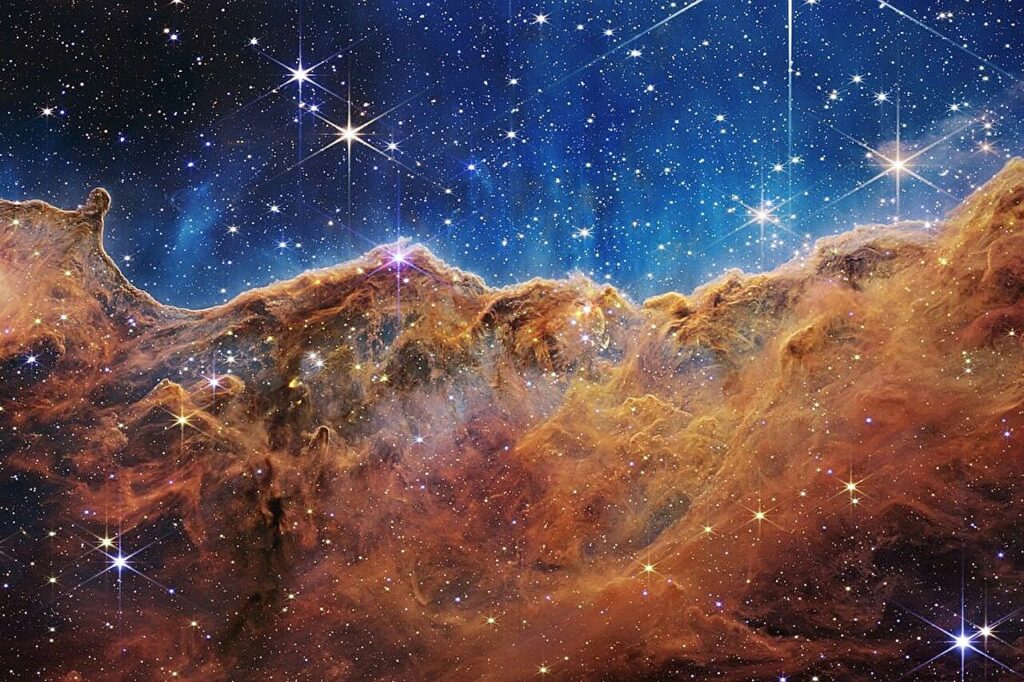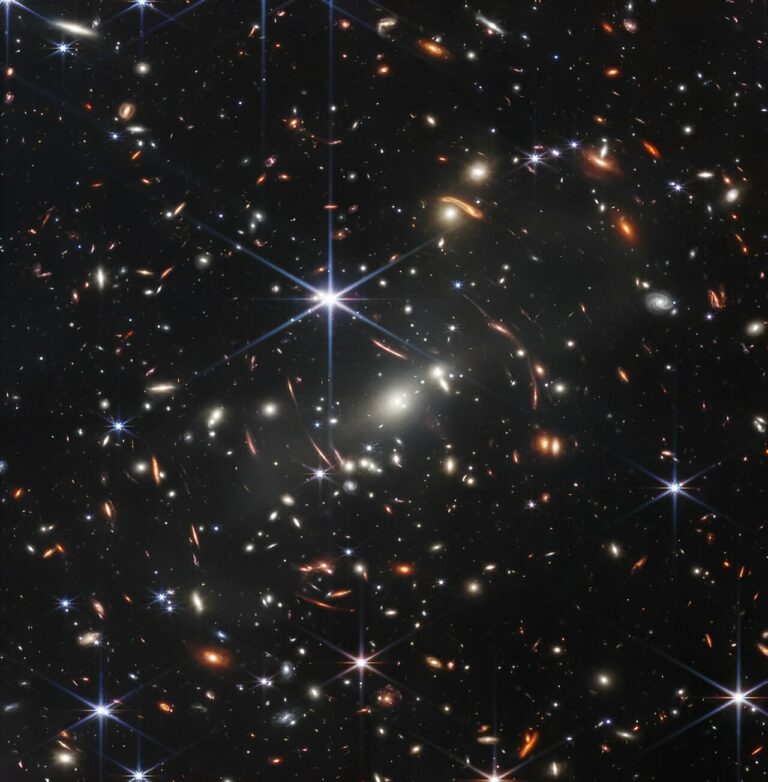James Webb Space Telescope: At Last, Exploring the Universe’s Edge and Beyond
Launched on Christmas Day in 2021, the James Webb Space Telescope is an extraordinary space observatory that boasts unparalleled complexity, precision, and power. Its remarkable capabilities are a result of the cutting-edge devices it houses, such as a guidance camera and a scientific instrument developed by researchers at Université de Montréal’s Institut de recherche sur les exoplanètes (iREx).
Under the guidance of Professor René Doyon from UdeM’s Department of Physics, these same scientists can now witness the fruits of their labor and expertise, as the initial data captured by the telescope has been made available to the public.
On July 11, 2022, U.S. President Joe Biden unveiled the first-ever photo taken by the James Webb Telescope. This image, characterized by its unprecedented color and clarity, showcases the deepest and sharpest infrared view of the distant universe. It captures a cluster of galaxies that formed over 13 billion years ago.
The following day, July 12, four more captivating images were revealed live from NASA’s Goddard Space Flight Center in Greenbelt, Maryland. These images exhibit unparalleled sharpness, showcasing the Carina and Southern Ring nebulae, as well as Stephan’s Quintet, a visual grouping of five galaxies.
Additionally, the James Webb Telescope conducted its first-ever spectroscopy of the exoplanet WASP-96 b, located 1,000 light-years away from Earth. By utilizing this technique to analyze the chemical composition of a distant object, the telescope successfully detected the distinct signature of water, along with evidence of clouds and haze.
Nathalie Ouellette, an astrophysicist, iREx coordinator, and communications scientist for the James Webb Telescope, provides further insight into these remarkable images.

Version 1:
The images showcased mesmerizing clouds of gas and dust emitted by dying stars, captivating galactic interactions, and previously unseen regions of stellar birth. In my opinion, the most noteworthy discoveries are twofold. Firstly, the sheer beauty of the images left a lasting impression on me, as they exuded an exquisite quality. Secondly, it is quite challenging to pick a favorite image, akin to selecting a preferred child.
One discovery that particularly resonated with me is the exoplanet spectrum. This holds a special place in my heart because it was captured by a Canadian instrument and provided evidence of water and clouds. This breakthrough allowed us to rectify previous findings that were based on less precise and sensitive data. Typically, when observing exoplanets, the data often do not align perfectly. However, the James Webb telescope’s data proved to be remarkably clear and pristine, unveiling astonishing revelations.
Furthermore, as my research delves into the formation and evolution of galaxies, the Stephan Quintet image left me in awe. It offered fresh insights into how galactic interactions potentially influenced the evolution of galaxies in the early stages of the universe.
So these images are truly unprecedented for the human eye?
Indeed, the human eye is limited in its ability to perceive certain wavelengths of light. This is why the Hubble telescope primarily focused on capturing visible light. However, the James Webb telescope operates in the infrared spectrum, allowing us to observe and study various phenomena that would otherwise remain hidden.
One such example is the enigmatic nature of nebulae. These celestial objects are shrouded in dense dust, obstructing our view of them in visible light. Nevertheless, by utilizing infrared technology, we are able to penetrate through the dust and capture stunning images of nebulae like the Southern Ring and Carina nebulae.
Are the photos the result of some kind of manipulation?
Yes, and the team that produced the images for the unveiling is amazing. Remember, it’s not an easy task to make invisible light visible. It required the work of artists and scientists who were able to translate infrared into the colors we can see. And the colors are not chosen at random: they serve to emphasize certain scientific and artistic aspects of the objects.
What will astrophysicists be able to do with the photos unveiled today?
There is still a significant amount of analysis that needs to be conducted. The images were captured within a short span of time, possibly even weeks. We are not even considering the possibility of months!It is akin to unveiling a treasure trove. We aim to examine each element meticulously and separately. The images hold a plethora of discoveries. It feels as though there is an entire galaxy concealed within every pixel. The revelations appear to be boundless.
Furthermore, the scientific operations of the telescope have only recently commenced. Scientists and astronomers from various parts of the world are now starting to utilize the telescope for their individual projects.
And what’s next for you at iREx’s, using the Webb?
The TRAPPIST-1 system presents an incredible opportunity for the James Webb program, as it allows us to observe planets in a way that has never been done before. This particular program, led by Olivia Lim, a Ph.D. student from Université de Montréal, is the largest Canadian initiative for the first year. Olivia will be focusing on studying the atmospheres of these rocky exoplanets, with the hope of finding one that closely resembles our own Earth. It’s an exciting endeavor, and who knows, we might just discover an Earth twin within the TRAPPIST-1 system.
This article is republished from PhysORG under a Creative Commons license. Read the original article.
Do not forget to share your opinion with us to provide you with the best posts !




0 Comments